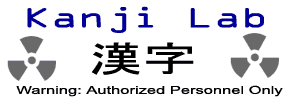
Departments

NOT A DIFFICULT KANJI
無
This is the kanji with a negative attitude, as its meaning is “not, negation.” The kun reading of this character, na(i), is most often written in hiragana in contemporary Japanese texts. This is also true of its conjugated kun forms, like naku naru 無くなる (=get lost; go missing; to die). There are two on readings, MU and BU. These are located at the beginning of many compound words, and the high frequency of both readings makes the distinction between MU and BU mostly a memorization task:
MU-beginning words:
無色(むしょく)colorless
無口(むくち)taciturn
無休(むきゅう) no holidays; never close (said of a store or business
BU-beginning words:
無事(ぶじ)safe and sound
不気味(ぶきみ)eerie
無用心(ぶようじん)unsafe; lacking caution
Words that end with the kun reading:
A few words, like mottainai 勿体無い (=wasteful) end with the kun reading.
Words that end with the on reading:
Words that end with the on reading of 無 are rare:
皆無(かいむ)nothing; nil
有無(うむ)existence; presence
虚無的(きょむてき)nihilistic